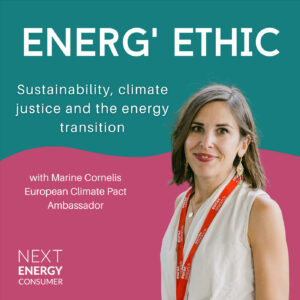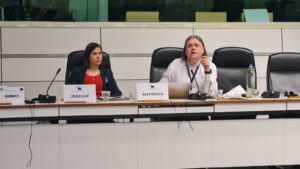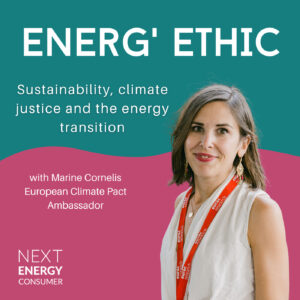With terrible floods sweeping northern Europe, wildfires burning the south, and the dangers of a sluggish COVID vaccine campaign, another race against time is underway: to address climate change and cut greenhouse gas emissions by at least 55% 2030 (compared to 1990 levels). The European Commission, firmly anchored to its recent – and first-ever Climate Law has therefore proposed a colossal legislative package to push all sectors of the economy to make more significant efforts. As the European Commission has proudly announced, the package will have a tremendous social impact, especially addressing energy poverty. But that’s not all: the consumer’s central role in the take-off of sustainable energy is confirmed. Quoting EU Vice-President Timmermans, “Europe’s transition will be fair, green and competitive.”
Before moving on to our analysis, we can ask why a new package of directives has already been put on the table, whilst those relating to the “Clean Energy for All Package” have not all yet been transposed into national law. The Commission’s response in its impact assessment is clear: the efforts made so far have not been sufficient to meet the ambitions of the Paris Agreement, and the analysis of Member States’ National Energy and Climate Plans shows that “the sum of national contributions (…) falls short of the Union’s level of ambition of 32.5% in 2030“. As the Covid-19 post-pandemic recovery focuses on “building back better”, and with the COP-26 in Glasgow only a few months away, the EU wants to assert its leadership in addressing climate change and reach climate neutrality by 2050.
From energy efficiency in transport to buildings, taxation, agriculture, and forestry, Europe is leading the way and seeking to bring its citizens on board. But is the package up to the task?
Better integrating the energy sector to stimulate the deployment of renewable energy and improve energy efficiency
The Commission wants to review the objectives of seven directives directly impacting the energy sector and greenhouse gas emissions: the Renewable Energy Directive, the Energy Efficiency Directive, but also the EU Emissions Trading System, Energy Taxation, ReFuelEU (Aviation), FuelEU (Maritime) and the Alternative Fuels Infrastructure Directives. The objective is to produce 40% of our energy from renewable sources by 2030, compared to less than 20% today. It will be coupled with, for example, mandatory integration of synthetic fuels in aviation. In district heating and cooling, the indicative annual increase in the use of renewables and waste heat and cold will double to 2.1 percentage points. Regarding energy efficiency for primary and final energy consumption, the objective is no longer to reach 32.5% in 2030 but 36-39% in 2030, i.e. a 9% increase compared to the ambitions announced by the Member States in 2020.
The flagship measure is a revision of the EU Emissions Trading Scheme (ETS), which since 2005 has lowered the emissions cap for specific economic sectors each year. This mechanism has reduced emissions from power generation and energy-intensive industries by 42.8% by putting a high price on carbon. The Commission, therefore, wants to reduce the overall emissions cap further and increase its annual reduction rate, particularly in the aviation and maritime sectors. At the same time, it wants to develop a system for road transport and buildings, as these sectors have not reduced their emissions enough so far. Collected revenues used will be used for building decarbonization, low emissions transports and financial support to limit the price impact. As the integration of a “carbon cost” will trickle down to end-users, part of the revenues from the new system for road transport and buildings should go to vulnerable households, micro-enterprises and transport users. Member States will have to spend the entire income from emissions trading on climate and energy projects. Targets will be tailored to national contexts: thanks to the Effort Sharing Regulation, each Member State will have enhanced emission reduction targets for buildings, road transport and inland shipping, agriculture, waste and small industries. Countries that already have equivalent schemes in place do not need an additional system.
New rights for energy consumers
Many measures will have a direct impact on consumers and their ability to participate in the energy transition. For example, the package gives a clear signal on the end of thermal vehicles in 2035, stimulating the electric car market. The tariffs applied and the number of public charging points for vehicles will be increased, which will end the concerns of some. However, as BEUC notes, the Commission is not encouraging flexible payment modes.
In domestic energy consumption, the package finally aligns the rights stemming from the proposed Energy Efficiency Directive to those of Directive (EU) 2019/944 on the electricity market design. The new EED proposes a clear framework for all “final users”, e.g. users of heating, cooling and domestic hot water services, such as district heating networks, including basic contractual rights (EED – Article 20). Therefore, an additional level of consideration is given to people and businesses who do not have a direct individual contract with the energy companies, as they live in a dwelling with a collective contract (Article 2 (50)).
They also get the explicit right to have access to an ombudsperson or other alternative dispute resolution mechanisms. The right to “the efficient handling of complaints and out-of-court settlement of disputes” is confirmed in many articles, such as number 27 on energy service and energy performance contracts. The parties’ participation in out-of-court dispute settlement mechanisms for household customers is made mandatory “unless the Member State demonstrates to the Commission that other mechanisms are equally effective” (Article 21). These provisions show that Europe is finally taking note of the importance of access to justice in the energy transition. Only an institution with broad competencies can resolve the disputes between users and companies systemically.
Finally, energy efficiency is further encouraged, which will be good for the planet and, ultimately, for households’ wallets. The European Climate Pact represents an excellent platform to engage “citizens of all ages” in the energy transition. People and businesses will benefit from one-stop information shops and expert help (EED – Article 21). Article 21 also foresees addressing barriers between tenants and landlords or between owners regarding the implementation of energy efficiency works. Household flexibility will also be stimulated so that electricity is consumed when renewable sources produce it. But BEUC notes that some households may continue to be taxed twice for the energy they consume and the energy they feed into the grid.
A missed opportunity to truly address energy poverty?
The Proposal for a Directive on Energy Efficiency contains many provisions relevant to addressing energy poverty. Firstly, it contains a definition (Article 2), specific requirements are made in Article 8 on energy savings obligations, and the whole of Article 22 is devoted to it. The notions of energy poverty and vulnerability are frequently mentioned, proving that the European Union has understood how serious the problems are.
The proposed Energy Efficiency Directive (finally) includes for the first time a European definition: “’energy poverty’ means a household’s lack of access to essential energy services that underpin a decent standard of living and health, including adequate warmth, cooling, lighting, and energy to power appliances, in the relevant national context, existing social policy and other relevant policies” (Article 2 (49)). It is good to see that this definition focuses on financial considerations and includes welfare issues, but like Louise Sunderland (RAP), we can only wonder why cooking needs and the affordability of these services are not stressed.
The EED proposal also suggests a broader definition of vulnerable consumers (Recital 61 and article 22), which the Member States must establish under Directives 2019/944 and 2009/73/EC. It invites the Member States to include in the definition not only customers in the strict sense, i.e. those with individual or direct contracts with the supplier of energy used for collective heating, cooling or hot water systems in multi-occupancy buildings but also end-users without a contract. This situation can happen in condominiums or shelters, where people pay their energy costs as housing charges.
The proposed EED suggests good progress in the understanding of the people’s different circumstances and that some groups may be more “affected by energy poverty or more susceptible to the adverse impacts of energy poverty, such as women, persons with disabilities, older persons, children, and persons with a minority racial or ethnic background” (Article 22). For instance, energy efficiency improvements should benefit first the people affected by energy poverty, and “be implemented as a priority among vulnerable customers and final users, people affected by energy poverty and where appropriate among medium-income households and people living in social housing, elderly people and those living in rural and remote areas” (Recital 60). Likewise, recital 99 insists on the fact that the “Member States should empower and protect all people equally, irrespective of their sex, gender, age, disability, race or ethnic origin, sexual orientation, religion or belief”. Those people are among the stakeholders who must be consulted by regional and local authorities when establishing specific energy efficiency measures in their decarbonization plans. However, Katharina Wiese of the EEB regrets that women are not recognized as “specific targets” under the Climate Social Fund, “as they are more at risk to suffer from energy poverty”.
Article 22 also requires Member States to make the best use of public funds and revenues from the ETS and the Social Climate Fund to devote energy efficiency improvement measures to vulnerable customers, people affected by energy poverty and, people living in social housing. It promotes funding and financial tools. Expert networks, gathering people from the health, building, and social sectors may be set up to understand the phenomenon better and set up integrated policy measures.
Energy efficiency is confirmed as the primary measure to address energy poverty, with a “holistic” policy and implementation framework. The new Article 8 (ex Article 7) obliges the Member States to achieve energy savings for vulnerable customers and end-users, people affected by energy poverty and people living in social housing. This is an important step. A minimum ringfence of energy savings delivered through energy efficiency obligation schemes (EEOS) is calculated at the national level. It is equal to the percentage of the population in energy poverty in the NECP or to an average of 3 Eurostat indicators: the inability to keep home adequately warm, arrears on utility bills, and the consumption expenditure by income quintile. The heat waves that are now affecting all of Europe do not seem to have convinced the Commission to consider cooling needs as well. The transport-related energy expenditure remains the elephant in the room. As calculated by Louise Sunderland of RAP, the ringfence levels result in an average of around 13%, with huge variations between countries, from 5% in Sweden to 37% in Bulgaria.
However, even though the European Commission recognizes that “while in the medium- to long-term, the benefits of EU climate policies clearly outweigh the costs of this transition, climate policies risk putting extra pressure on vulnerable households, micro-enterprises and transport users in the short run”, many of the measures that could have an impact on energy poverty levels might be too mild or even lead to increased inequalities. Article 22 even explicitly recognizes the distributional effects of policies, such as taxation measures or ETS.
For example, while the Commission has reaffirmed its ambition to eradicate energy poverty by the end of the decade, notably by speeding up housing renovation, it has missed the boat on the cost side. One of the Commission’s flagship measures, the extension of carbon emissions (ETS) to the transport and housing sectors, could be a social time bomb. A report of ERCST project that energy bills could go up by an average of €429 per year per European household due to including buildings in the ETS. As Martha Myers of the Right to Energy Coalition recalls, “those who are least responsible for our current climate crisis are being asked to pay the highest price for the energy transition”. Indeed, the transport and housing sector have “market ‘rigidities’”, as European Trade Union Institute researcher Béla Galgóczi points out. Emissions in those sectors do not “respond to price signals”, and consumers risk being “locked into fossil-fuel-based systems with limited alternatives”. The possibility offered by the Energy Taxation Directive to exempt vulnerable households from higher energy taxes might not make a big enough difference either.
The new Social Climate Fund, proposed by Commission Vice-President and Green Deal leader Frans Timmermans to support low-income groups in the energy transition, is not likely to be sufficient to cover the expected price increases and solve structural energy poverty issues. This Fund aims to “support households, transport users, and micro-enterprises affected by the impact of the new ETS for building and transport fuels”, “provide direct income support for vulnerable households”, “support investments in energy efficiency and renovation of buildings, clean heating and cooling, and integration of renewable energy” and “help finance zero-and low-emission mobility”. This Fund should start in 2025 and last until 2032. The late starting date is likely to limit its impact, and its amount is undoubtedly too low to make a significant difference. €72.2 billion of the Social Climate Fund resources would come from the EU budget, corresponding to one-fourth of the expected revenues of emissions trading for building and road transport fuels. Member State contributions would double the Fund, amounting the available resources to €144.4 billion for the total period, hence €20.6 billion a year. Louise Sunderland (RAP) has calculated that the Fund amounts to “€230 for each EU citizen in 20% lowest income bracket or total €1,600 per low-income person”. This might be enough to offset the price impact if redistributed in financial support to vulnerable households. Still, it would be “far from enough to also renovate homes and decarbonize private and public transport” and help micro-businesses as well. As FEANTSA says, “if the ETS is really to be extended to the building sector, all of its revenue must be earmarked for social purposes. Even better would be not to extend ETS to the building sector and use the money coming from the existing ETS to tackle energy poverty by targeted renovation programs”.





